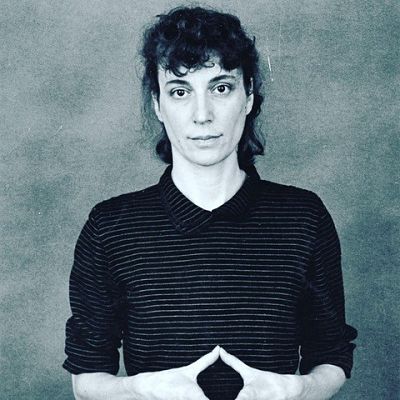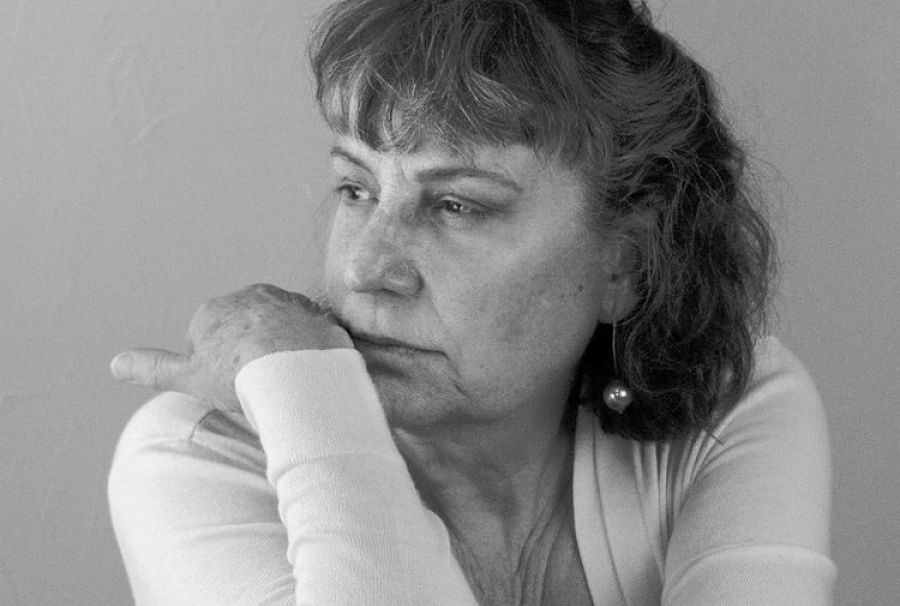Dancer, choreographer, and teacher Mary Overlie died on June 5. She was 74.
What to say about Mary Overlie? She was the embodiment of Walt Whitman’s passage from Leaves of Grass: “Do I contradict myself? Very well then I contradict myself, (I am large, I contain multitudes.)” In short, Mary was a mass of contradictions.
Mary was a quintessential wild child of postmodern dance who was fiercely disciplined and devoted to the Hamilton ballet floor barre. She was an artistic anarchist whose devotion to experimentation and aversion to reification resulted in the creation of the Six Viewpoints, an approach to performance training that became a mainstream foundational “technique” in innumerable national and international conservatories and has been modified and reified by countless artists. Mary valued formal structure and yet actively sought to subvert any rules that might impinge on the individual artist’s realization of their unique artistic vision. She was very suspicious of institutions and yet co-founded Danspace, Movement Research, and the Experimental Theater Wing (ETW) in the Drama Department at NYU’s Tisch School of the Arts, three important and long-standing New York organizations, as well as her own center in Montana, her home state. She was a dancer trained in ballet, Graham, and Cunningham who performed with postmodern masters Barbara Dilley, Yvonne Rainer, the Natural History of The American Dancer, and in her own dance company with Wendell Beavers, Paul Langland, and Nina Martin.
Although well known in the dance world, winning a Bessie for lifetime contributions to dance in 1999, it was her influence on theatre and theatre training that gained her more widespread recognition. She had a long-standing relationship with Mabou Mines, choreographing and contributing staging to works by JoAnne Akalaitis and Lee Breuer, including his iconic production of Beckett’s The Lost Ones at the Public Theater featuring David Warrilow. She collaborated and choreographed for productions directed by Anne Bogart, including the famous and infamous postmodern reworking of South Pacific, which garnered a Bessie Award.
Mary was born and raised in the isolated vastness of Montana and, after hopping a freight train as a teenager to live in San Francisco, went on to have an extensive global influence. Through it all Mary was unassuming, crystal clear in her thinking, and very outspoken. Those traits, combined with her quizzical smile and sometimes whimsical persona, made her an inspiring, disarming, and quite unpredictable presence.
My own first interactions with her left me dumbfounded, confused, deeply irritated, and profoundly skeptical. Apparently initial experiences with Mary and her work often had that effect on people. I came to New York in 1980 to lead paratheatric sessions for Anne Bogart’s Emissions Project. Anne strongly suggested I study with someone named Mary Overlie. In my ignorance, I had no idea who Mary was, but Anne spoke so highly of her I decided to take one of Mary’s classes at ETW where she was teaching something she called the Six Viewpoints.
As an actor who had trained with Grotowski, acted with the Iowa Theater Lab, and had some interest in politically oriented theatre, the applicability of the Six Viewpoints to acting eluded me. All the things I considered to be essential elements of theatre were absent. Where was the dramatic action? It was not clear to me what Viewpoints was training me “to do.” However, although I found her work a bit baffling, and the apparent absence of content frustrating, I found Mary’s presence quite compelling.

From the beginning it was clear that her passionate commitment to her work was deep and unmistakably authentic. It was that authenticity that kept pulling me back. Day after day I would come to class to be greeted by Mary’s impish smile and kind yet piercing eyes and spend hours walking, stopping, lying down, and making shapes. Eventually I began to realize that all that walking and stopping, attempting to distinguish the differences between working with space, shape, time, emotion, movement, and story was helping me develop an increased and embodied awareness of and appreciation for the objective formal elements and subjective somatic information that were constantly at play with one another in live performance.
It slowly became clear to me that the Six Viewpoints were not training me “to do” anything but rather to “not do,” to simply and deeply observe and process everything. They were a kind of ur-non-technique whose non-hierarchical ethos and decentering of the artist’s ego and of the trappings of dramatic story were a means toward expanding perception and increasing creative freedom. What I initially perceived as an absence of content transformed into an awareness of the presence of limitless possibilities. I also found that they were a very concrete way to learn the compositional underpinnings of all staging and choreography. That knowledge made staging and directorial troubleshooting more efficient. And, over the years, as I joined in the rapprochement between dramatic and post-dramatic theatre, I found that they were also a very effective way to create clear, communicative physicalizations of realistic dramatic action.
Over the 40 years I knew Mary our relationship went through many permutations. I was her student, then her colleague at ETW. When she directed ETW she was my boss and producer. Later on, when I directed ETW, I was her boss. And I was always her friend. Through all the years, shifting structures, and changing parameters of our relationship, she never ceased to surprise, amaze, befuddle, irritate, and inspire me. Mary always let you know where she stood. But you could never predict at any given moment where you might find her standing.
I am deeply grateful and indebted to Mary. Her devotion to identifying, creating, organizing, and articulately disseminating her life’s work, the Six Viewpoints, was a game changer for me. Her presence, as an artist, person, and teacher, immeasurably enriched my life and the lives of thousands of dancers, actors, directors, musicians, theatremakers, and teachers of all kinds from many generations. Her absence will be deeply felt.
Kevin Kuhlke is an arts professor at NYU Tisch School of the Arts’ Department of Drama, specializing in acting, directing, improvisation, and physical theatre.


